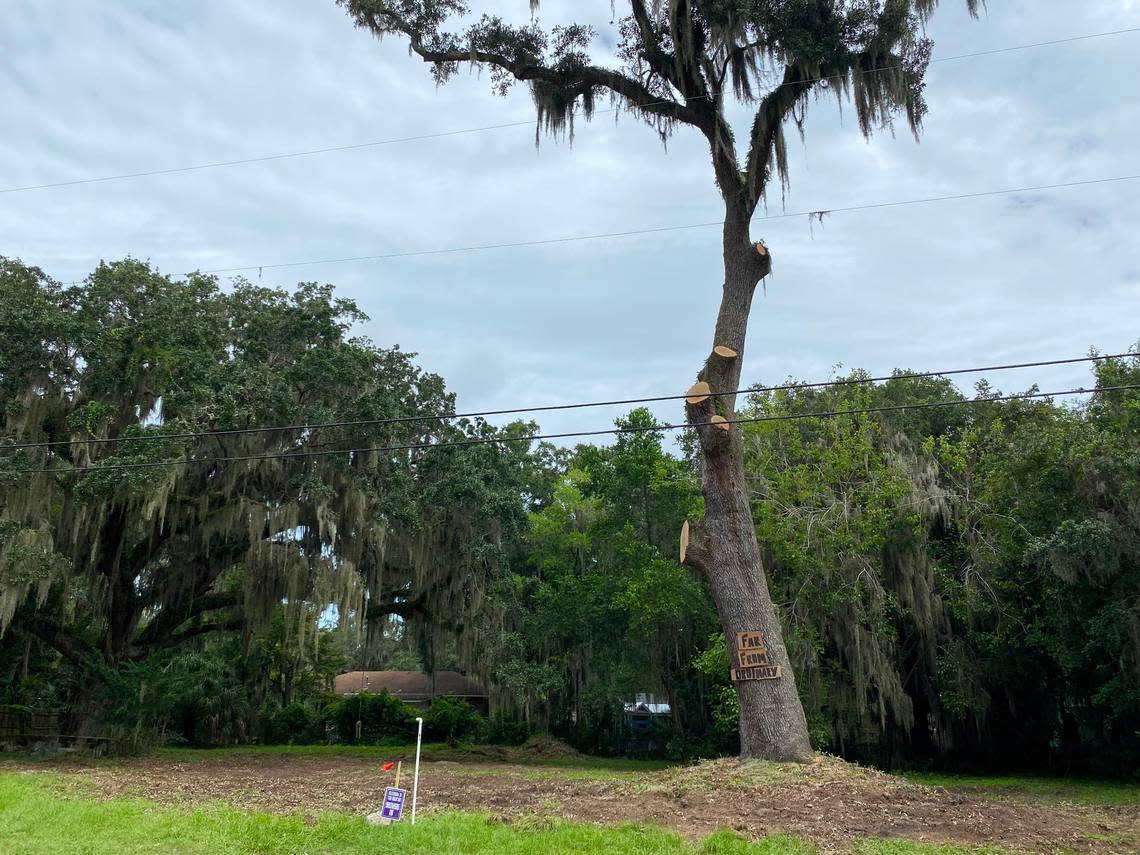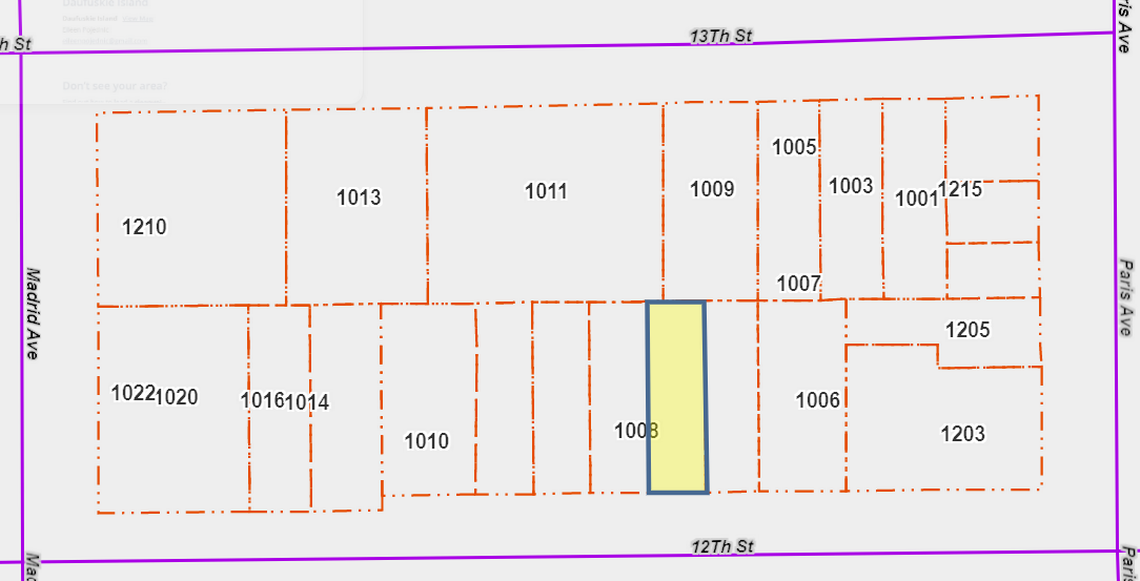Will this landmark tree in Port Royal be saved? Attorneys are trying to hash out the dispute
A meeting to hear an appeal of the removal of a landmark live oak tree in Port Royal — which last month sparked a backlash among residents and a stop-work order — has been postponed to give attorneys more time to try and hash out the dispute.
On Aug. 25, Emily M. Nellermoe with the South Carolina Environmental Law Project filed an appeal of the OK of the tree’s removal, arguing it didn’t meet all provisions of the town’s tree removal ordinance.
The appeal was filed on behalf of resident Elizabeth Bergmann, who requested that the town stop the work Aug. 10 after seeing that the tree was being pruned in preparation for removal. The town agreed.
Coastal Homes and Sunrooms, LLC had sought the permission to cut down the 43-inch live oak to make way for five single-family homes on 12th Street just off of Paris Avenue but the property is owned by Bluffton-based MCN Property Solutions LLC, whose registered agent is listed as Eugenia McNulty, according to Beaufort and state of South Carolina records.
The appeal was scheduled to be heard by members of the Zoning Board of Appeals Monday, but Mayor Joe DeVito said the town was asked to postpone the meeting until Oct. 3.
Nellermoe, of the Law Project, said the appeal meeting was continued to give the parties a chance to “explore a resolution outside of that process.” The stop-work order, Nellermoe added, remains in place.
“We’re hopeful that we can reach some kind of resolution,” Nellermoe told the Beaufort Gazette and Island Packet on Tuesday, “and what that resolution is I don’t know until we get all the parties to the table.”

It’s possible, she said, that the dispute could be resolved in the next few weeks.
The developer couldn’t immediately be reached for comment.
The town of Port Royal, DeVito said, is “still talking to all parties involved.”
Town Council members will meet privately during their regular meeting Wednesday evening to get a legal briefing on the issue.
The uprising over the tree, Nellermoe said, exposed weaknesses in the town’s tree ordinance, including the public having little voice in the permitting process. She says the ordinance should be amended to allow for “meaningful public input.”
The Georgetown-based Law Project, which also has offices in Mount Pleasant, Greenville and Columbia, provides legal advice to environmental organizations and concerned residents about environmental regulations.
Stronger tree ordinances are needed in many places, not just Port Royal, Nellermoe says, but lessons learned here can be applied elsewhere.
“The people of Port Royal really care about their trees — they have so many beautiful trees,” Nellermoe said. “So it’s important we figure out a way to make these ordinances stronger.”
Residents rally around the trees
Barbara Berry, a retired teacher who helped to gather signatures for a petition against the tree removal, said residents are “keenly interested” in the issue and want to be kept better informed about what’s going on.
“I know people have a right to develop their land but they also should be responsible for being caretakers of these heritage trees,” Berry said. “That’s what we are fighting for.”
Under the town’s tree ordinance, live oaks bigger than 24 inches are considered “landmark trees.
Town staff was originally presented with a design that saved a 60-inch live on a separate parcel, but required the removal of the 43-inch live oak in the footprint of the driveway to access the five homes, according to town records. But an arborist informed the builder and staff that the initial plan would not save the 60-inch live oak, and that plan was abandoned.
Staff later provided the builder with a site plan that would have saved both trees, according to the town, but the square footage of the homes was significantly decreased and would have resulted in a financial loss for the developer.
“Both of these trees have slight defects having an improbable likelihood of failure,” arborist Michael Murphy told the town in a report. “They would both be excellent candidates for preserving on site.

